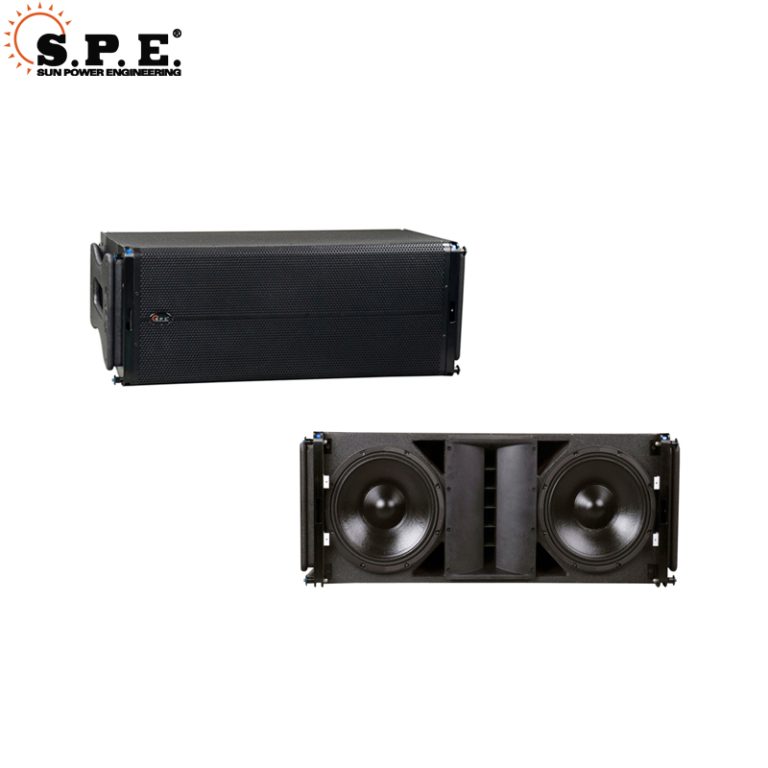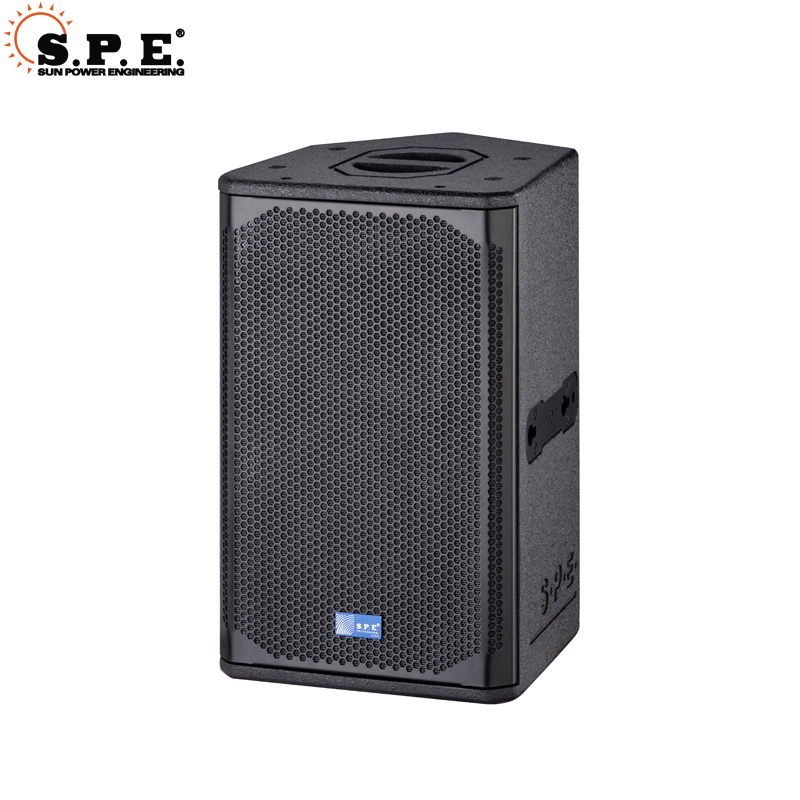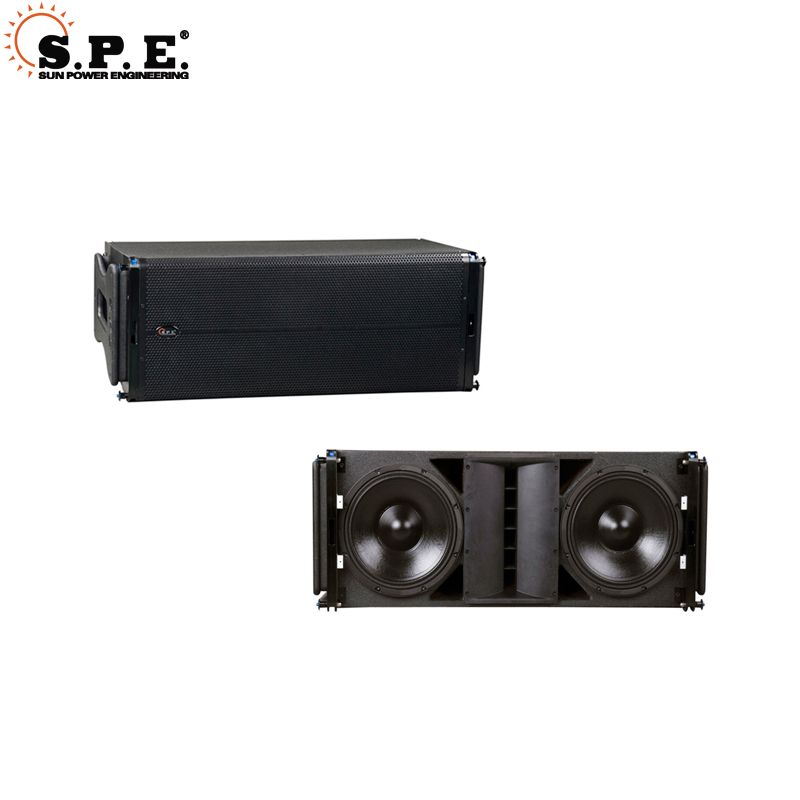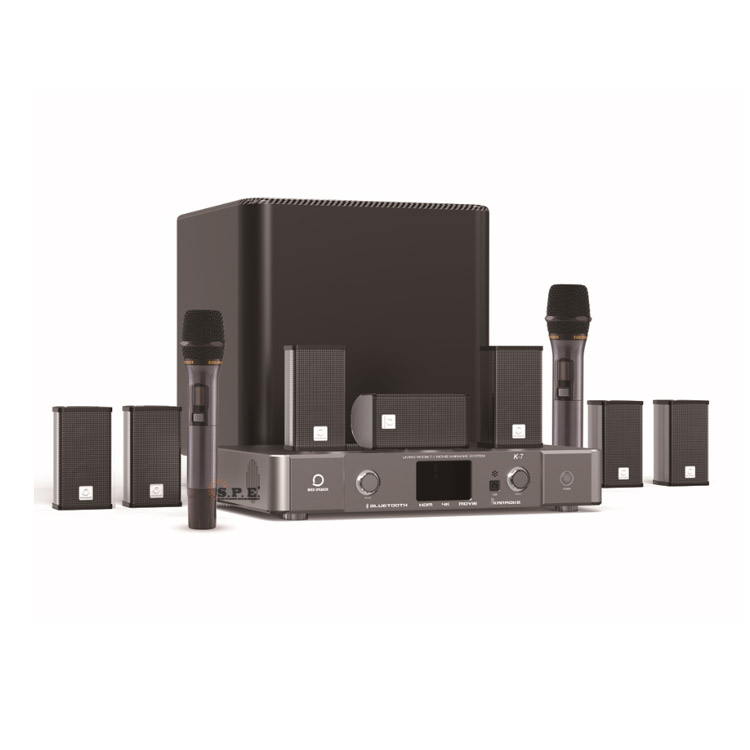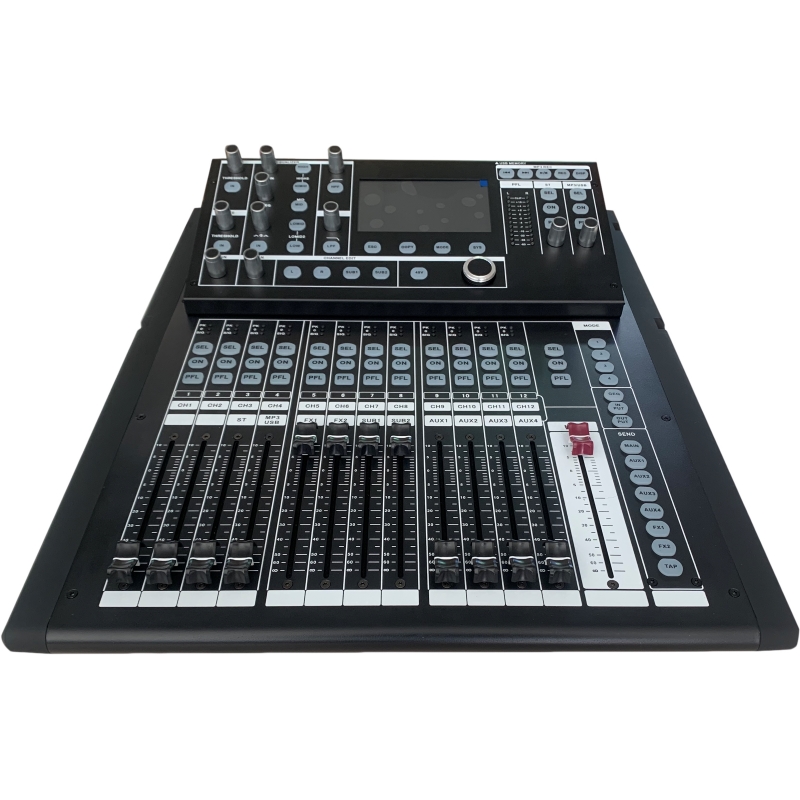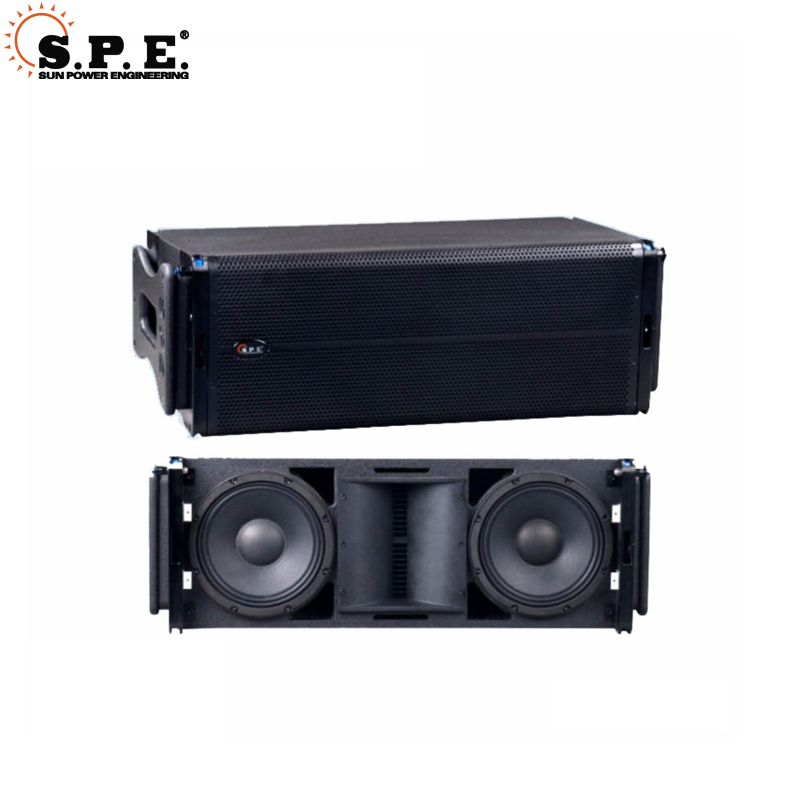
When designing a line array system, it is key to take an holistic approach. When working with sound design and installation professionals on this project, make sure they take all aspects of the entire system into consideration.
High-pass filters filter out low frequencies that could obstruct your audio signal, such as noise from fans, refrigerators, and HVAC systems.
DSP
DSP (Digital Signal Processing) is the “brain” inside an active speaker that manages audio information by manipulating ones and zeroes to achieve a specific effect. This goes beyond simply preventing distortion at lower volumes or adding lows at higher volumes; rather it creates different sounds to simulate different spaces or special effects – similar to how smartphone apps use DSP to add reverb and delay effects and simulate different rooms when listening to music on headphones.
DSPs play an invaluable role in line array systems by performing complex calculations to ensure all speakers have equal mouth SPL and full coverage. Furthermore, the DSP can help control horizontal dispersion patterns for an even sound field experience for listeners.
Some line arrays feature built-in DSP capabilities while others require an amplifier with its own dedicated DSP to run the system. Most modern line arrays utilize both approaches in order to power speakers properly without overburdening or damaging them with too much wattage.
These DSPs feature advanced features that are useful in creating various acoustic responses and beams to focus the direction of sound for improved speech intelligibility in environments with bothersome reverberation. Furthermore, real-time optimization ensures all speakers in a large venue are operating at peak performance levels.
DSP design requires complex mathematical calculations, so selecting an architecture capable of handling this task is of great significance. The optimal solutions use DSP extensions on an Arm processor which allow more processing power to be dedicated towards audio algorithms than would otherwise be available, helping designers avoid additional costs, complexity and coding barriers caused by using multiple processors.
DSPs in line array systems can be used to calculate delays and volume shading for each speaker zone in the array. This calculation can be particularly tricky with line array systems due to having many distinct tweeter zones (12 typically) and 8 distinct woofer zones; every zone needs its own delay in order to achieve equal mouth SPL levels.
Crossovers
An effective, high quality speaker system requires a crossover that limits both drivers’ bandwidths appropriately, thus reducing distortion levels and creating an integrated frequency and power response both on and off axis.
This means that the output from BOTH drivers will match more closely, providing better intelligibility and uniform coverage across the listening area. A poorly designed filter network could increase acoustic output distortion for both drivers, detracting from overall performance.
Crossovers are essential in every audio system, regardless of application. From home theater systems and pro PA systems to touring applications, crossovers help direct the appropriate frequencies directly to each driver – in this instance, lows/midrange and highs respectively – with proper design making sure frequencies reach both drivers effectively.
There are various types of crossovers, from basic first order filters to more intricate designs. While some crossovers may be integrated directly into speakers themselves or separate components you plug in between amplifiers and speakers, a good, high quality speaker system requires both active and passive crossovers for optimal results.
An effective passive or active crossover designed with care will reduce losses and distortion, providing drivers with stable load impedances while effectively restricting their bandwidth in order to limit distortion levels and provide for even frequency response across both on-axis frequency response and power response (the total output from all speakers).
One of the biggest errors when designing a loudspeaker system is using lower quality parts in its crossover, leading to significant degradation in performance.
Manufacturers sometimes rely on electrolytic capacitors in critical series circuits as cost savings measures over higher performance air poly caps, yet these parts tend to possess a higher dielectric constant that may add distortion over the more costly alternatives. A well designed loudspeaker typically replaces such electrolytic caps with lower value film capacitors in order to avoid their potential negative impacts on overall performance.
Real-time Adjustments
DSP gives live settings more freedom than ever before, by applying room correction and other advanced DSP algorithms to an array. By doing this, it can become acoustically perfect in any environment or customized to specific genres or musical styles; some high-end audio systems even come equipped with presets for popular, rock, jazz and other types of music – these DSP functions make a tremendous difference to how speakers perform and can elevate performance significantly.
One of the primary uses for DSP is correcting acoustic inconsistencies caused by room dimensions and reflections. Advanced DSP systems analyze your space before applying filters to neutralize these effects – producing much cleaner sound quality from your speakers as they reveal details previously hidden by room reflections.
DSP technology can also be utilized to correct the frequency response of speakers. While this can be challenging without high-resolution measurement equipment, with proper calibration you can produce very accurate speaker response. Doing this by hand would be like trying to isolate bacteria in urine with magnifying glasses–impossible and subpar at best!
To do this effectively, it’s necessary to understand how frequency and phase interact in a loudspeaker. Begin by viewing both on-axis and off-axis response of your speaker with an audio analyzer; next check combination curve to ensure both speakers sum evenly acoustically.
Next, it is necessary to determine how far away your speaker response is from its target value. This can be accomplished by comparing on-axis and off-axis responses against a response curve provided by your manufacturer; if your desired response lies within one decibel of what was actually measured then everything is in good order.
As part of your final step, ensure your speakers are set up with equal polarity and configured correctly for their intended use. For instance, if you plan on using two three-way side fills and a cue wedge as fills, make sure all DSP filters are configured according to this configuration; otherwise you risk encountering inconsistent response and phase issues that will make creating an excellent-sounding system more challenging from day one.
Optimization
As digital revolution continues to transform our audio experiences, DSP technology is an integral component. From simple equalization to complex room correction algorithms, this versatile technology can be used for everything from equalizing music tracks to automatically correcting your environment in real-time – some sophisticated systems even use DSP to monitor real-time changes and make changes on its own! Interestingly, advanced DSP is becoming an essential element in personalizing sounds as opposed to just correcting them.
DSP offers several key advantages that enhance speaker performance. It can improve frequency response, reduce distortion and eliminate issues caused by crossovers such as phase shift. Since crossovers are electrical devices, their output alterations occur whenever their slope or alignment change – whether or not there is a crossover attached.
Crossovers change the phase relationship between high and low frequencies in speakers, but they also impact other factors. For instance, speakers mounted further away from microphone will have longer wavelengths which alters output by 1.36 times regardless of crossover slope slopes.
Referencing tracks during equalization and calibration is essential in establishing baseline frequency response targets and verifying whether your system delivers realistic sound at the selected playback volume.
DSP technology can also enhance other aspects of speaker system performance, including inter-speaker polarity coherence and early reflection levels relative to direct sound for improved immersive audio and stereo performance. Analog systems require manual adjustments; therefore these issues must be managed through digital means more easily.
The LEA Connect Series utilizes DSP to maximize its line array modules’ performance. Its advanced 96kHz DSP offers fast load monitoring and dynamically adjusts input voltage according to actual power consumption – protecting speakers from overloads while avoiding damage. In addition, real-time peak detection ensures amplifiers are operating at peak efficiency for maximum reliability and longevity of operation – creating more reliable systems with greater performance and longer lifespans.

